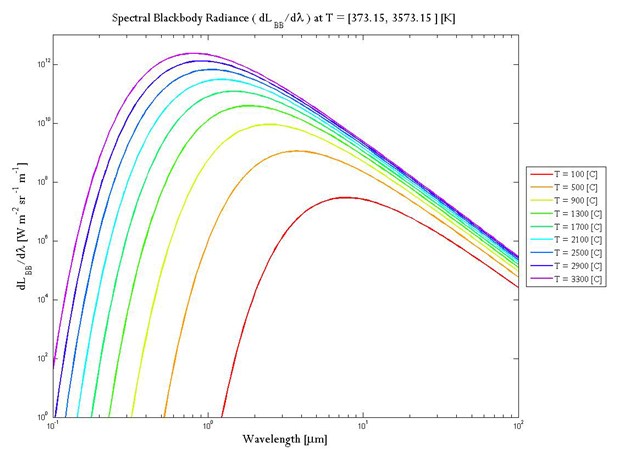- Expertområden

- Tidigare projekt

- Whitepaper on IR-images
Content:
(click respective paragraph title link below)
-
What is it you see in an Infrared Image?
-
What influences the contrast in an Infrared image?
-
The sun -The great contrast maker
-
Contrast dips, twice a day...
- Clouds, fog and rain, all three factors influence contrast
-
Low Emissivity Objects
-
Wave bands and Transmissions
-
Unexpected Effects
- Examples of Images at different Wavelengths
1. What is it you see in an Infrared Image?
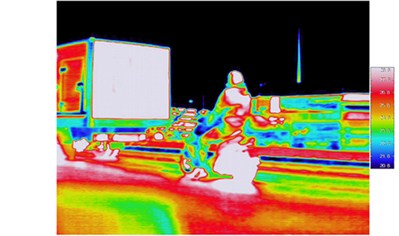
You see temperature.
Different temperatures are represented by different colors or by different shades of gray. Only if there is a difference in temperature between background and objects you will be able to distinguish them.
If background and objects in a scene have exactly the same temperature you will not be able distinguishthe objects from the background. This never happens in reality, but since the contrast in your IR-image so deeply depends on temperature differences there are other things that influence the quality of your IR-image than ordinary visual images.
2. What influences the contrast in an Infrared image?
The radiation of the sun during the day and the (heat) emission during the night are together the engine that creates the primary contrasts in an IR-image.
3. The sun -The great contrast maker
So if you look at a landscape in infrared you will mainly see the temperature differences that the sun has produced.

4. Contrast dips, twice a day...
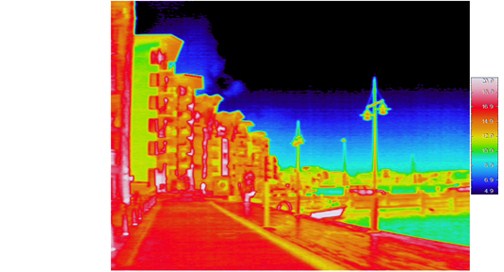
When the night comes the sun of course disappears and if there are no clouds everything outdoors is exposed to the naked sky which has a temperature of approximately -273 °C. All objects cool off at different speeds depending on the same material parameters that made them heat up at different speeds. This will create a special swap effect in temperature differences, so that things that actually were hotter than other objects before will become colder. This also implicates that at some point during the night things will more or less have the same temperature and the contrast in an IR image will be poor for a while. The same thing will happen during the day.
5. Clouds, fog and rain, all three factors influence contrast
Fog does the same thing to object temperature as rain but at a slower rate. It also greatly affects transmission through the air. Depending on drop size the fog is more or less transparent to infrared radiation. In almost every case fog means very poor IR-images, but on very rare occasions, fog can actually be like milk for the naked eye and almost totally transparent for the IR-camera.
6. Low Emissivity Objects
One should also remember that things that are not reflective in the visual region might be highly reflective within the Infrared region, and vice versa. Ordinary glass as an example, is not transparent in the infrared area, but white plastic polyethylene bags are more or less totally transparent.

7. Wave bands and Transmissions
Every object above the absolute zero (-273°C) acts as a source of radiation. Planck’s law of radiation shows that the radiation peak of an object is located at a wavelength that depends on the temperature. Really hot objects like a jet motor etc will best be seen in the SWIR since it radiates most in that atmospheric transmission gap. Objects in nature like animals as well as ordinary manmade structures usually emit in wavelength regions where LWIR-cameras is the best choice.
8. Unexpected Effects

9. Examples of Images at different Wavelengths, NIR
NIR
Most ordinary cameras used for visible wavelength are also sensitive to IR but provided with a IR filter. If you remove this filter then you will have a camera that is also sensitive to NIR. Continue.

9. Examples of Images at different Wavelengths, LWIR
LWIR all roomtemperature or temperatures in nature will show best at LWIR. Continue.
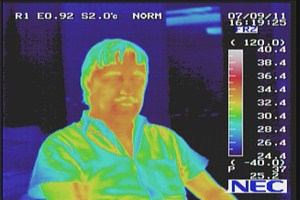
9. Examples of Images at different Wavelengths, VLWIR
VLWIR
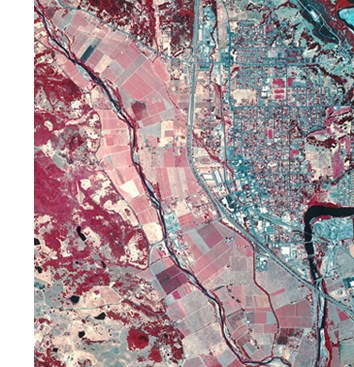
Really cold environments like the (Ant)Arctic regions are best seen in VLWIR. Satellites sometimes use these wavelengths.



